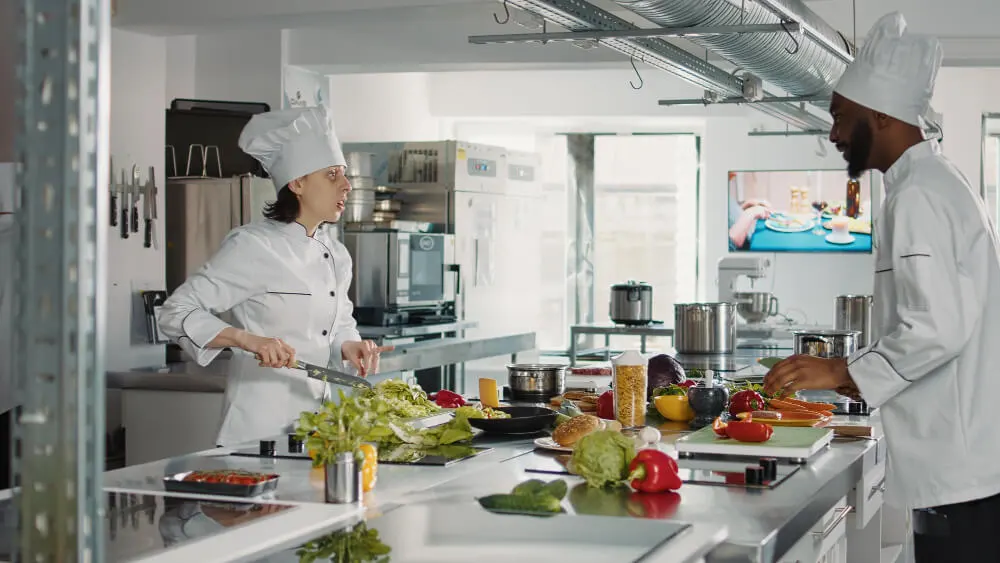Starting a food business can be really exciting! It’s all about bringing your passion for cooking to life. Many people dream of opening their own restaurant after spending years lovingly cooking and serving food to others. But it’s not easy. There are lots of challenges along the way. You need to plan everything really carefully. From conceptualization to execution, every step requires careful planning and meticulous attention to detail. In this How To Open a Restaurant- comprehensive guide, we will walk you through the essential steps to turn your dream of opening a restaurant into a reality.
How to Open a Restaurant : Full Guide
Choose a Restaurant Concept
The first step in opening a restaurant is to define your concept. Your concept will serve as the foundation upon which your entire business will be built. Whether you envision a cozy neighborhood bistro, a trendy gastropub, or a fine dining establishment, it’s crucial to choose a concept that aligns with your culinary style, target demographic, and market trends. Take the time to research potential concepts, analyze competitors, and identify gaps in the market that your restaurant can fill. By selecting a unique and compelling concept, you’ll set yourself apart from the competition and attract loyal customers eager to experience your culinary vision.
Create a Restaurant Business Plan
With your concept in mind, it’s time to create a comprehensive business plan for your restaurant. A well-crafted business plan will outline your goals, strategies, financial projections, and operational plans. Start by conducting market research to assess the demand for your concept, identify your target audience, and evaluate the competitive landscape. Next, outline your restaurant’s organizational structure, including roles and responsibilities for key personnel. Additionally, develop a detailed marketing plan to attract customers and generate buzz around your opening. Finally, create a financial plan that outlines your startup costs, revenue projections, and break-even analysis. A solid business plan will not only serve as a roadmap for your restaurant but also provide invaluable guidance for securing funding from investors or lenders.
Assure Your Restaurant’s Funding
Securing funding is one of the most critical steps in opening a restaurant. Whether you’re self-funding your venture, seeking investors, or applying for a small business loan, adequate funding is essential to cover startup costs, operating expenses, and unforeseen contingencies. Start by estimating your total funding needs based on your business plan and budget projections. Then, explore various funding options, such as personal savings, family and friends, angel investors, venture capital, or bank loans. Be prepared to present a compelling case for why your restaurant is a worthy investment, backed by thorough research, a solid business plan, and a clear path to profitability. Additionally, consider alternative funding sources, such as crowdfunding or grants, to supplement your financing strategy. By securing adequate funding, you’ll ensure that your restaurant has the resources it needs to thrive in the competitive hospitality industry.
Find a Premier Location for Your Restaurant and Complete Legal Procedures
The location of your restaurant can make or break its success. Finding the perfect location requires careful consideration of factors such as foot traffic, visibility, parking, and demographic trends. Start by researching potential neighborhoods and scouting out available properties that align with your concept and target market. Consider partnering with a real estate agent who specializes in commercial properties to help you navigate the rental or purchase process. Once you’ve found a suitable location, it’s essential to complete all necessary legal procedures and obtain the required licenses and permits to operate your restaurant legally. This may include zoning approvals, health department permits, liquor licenses, and business registrations. Be sure to consult with legal experts or industry professionals to ensure compliance with all local, state, and federal regulations. By securing a premier location and completing the necessary legal procedures, you’ll lay the groundwork for a successful restaurant launch.
Plan Your Restaurant’s Layout & Design
The layout and design of your restaurant play a crucial role in shaping the overall dining experience and ambiance. Whether you’re designing a cozy cafe, a chic bistro, or an upscale dining room, it’s essential to create a space that is both functional and aesthetically pleasing. Start by developing a floor plan that optimizes space utilization, flow, and seating capacity. Consider factors such as kitchen layout, dining area configuration, bar design, and restroom accessibility. Next, focus on the interior design elements, including decor, lighting, furniture, and color scheme. Choose a cohesive design theme that reflects your restaurant’s concept and creates a welcoming atmosphere for guests. Collaborate with architects, interior designers, and contractors to bring your vision to life, ensuring that every detail is thoughtfully considered. By planning your restaurant’s layout and design with care, you’ll create a memorable dining environment that keeps customers coming back for more.
Map Out Your Menu
The menu is the heart and soul of any restaurant, showcasing your culinary talents and enticing diners with a tantalizing array of dishes. When planning your menu, strive for a balance of flavors, textures, and cuisines that will appeal to a wide range of tastes and dietary preferences. Start by selecting high-quality ingredients that are fresh, seasonal, and locally sourced whenever possible. Consider incorporating signature dishes or chef’s specials that highlight your unique culinary style and set your restaurant apart from the competition. Additionally, offer a variety of options to accommodate different dietary restrictions, including vegetarian, vegan, gluten-free, and allergen-friendly choices. Keep your menu concise and focused, avoiding overwhelming diners with too many options. Conduct taste tests and gather feedback from friends, family, and potential customers to refine your menu and ensure that every dish is a standout success. By mapping out your menu with care and attention to detail, you’ll create a dining experience that leaves a lasting impression on your guests.
Invest in Restaurant Technology
In today’s digital age, restaurant technology plays an increasingly important role in streamlining operations, enhancing customer service, and maximizing efficiency. From point-of-sale systems and online ordering platforms to reservation management software and kitchen automation tools, investing in the right technology can help your restaurant stay ahead of the curve. Start by identifying areas of your operation that could benefit from technological solutions, such as order processing, inventory management, staff scheduling, and customer relationship management. Research different software providers and solutions to find the best fit for your restaurant’s needs and budget. Additionally, train your staff to use new technologies effectively and integrate them seamlessly into your daily workflows. By investing in restaurant technology, you’ll improve productivity, reduce costs, and deliver a seamless dining experience that keeps customers coming back for more.
Hire Top-notch Restaurant Staff
Your staff are the face of your restaurant, playing a crucial role in delivering exceptional service and creating a positive dining experience for your guests. When hiring employees for your restaurant, prioritize qualities such as professionalism, hospitality, and a passion for food and service. Start by defining clear job roles and responsibilities for each position, from front-of-house staff and chefs to bartenders and kitchen assistants. Screen candidates carefully, conducting interviews, checking references, and assessing their skills and experience. Look for individuals who demonstrate strong communication skills, attention to detail, and a commitment to excellence. Provide comprehensive training and ongoing support to ensure that your staff are well-prepared to meet the demands of the job and deliver exceptional service to every guest. By hiring top-notch restaurant staff, you’ll create a positive work environment and set the stage for success in the competitive hospitality industry.
Conclusion
Opening a restaurant is a labor of love that requires dedication, creativity, and perseverance. From choosing a concept and creating a business plan to securing funding and hiring staff, every step of the process is essential to the success of your culinary venture. By following this comprehensive guide and putting in the hard work, you’ll be well-equipped to navigate the challenges of restaurant ownership and create a dining experience that delights customers and fulfills your dreams. So, roll up your sleeves, embrace the journey, and get ready to embark on an exciting culinary adventure!








